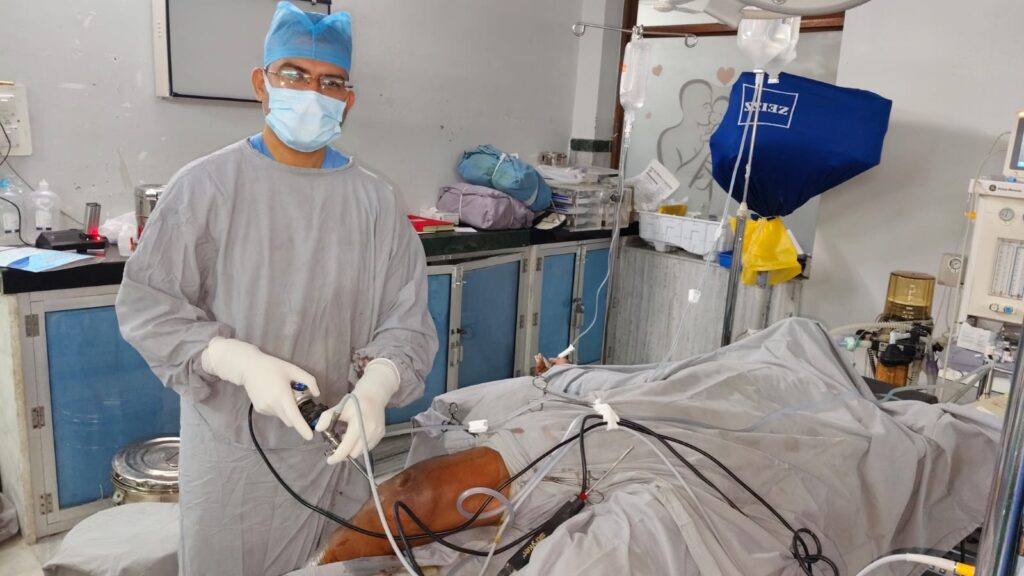
Arthroscopy ( Key hole Surgery)
The word arthroscopy comes from two Greek words, “arthro” (joint) and “skopein” (to look). The term literally means “to look within the joint.”
In arthroscopic surgery , a tiny puncture is made in the skin over the joint through which 4 mm pencil size special telescope, called Arthroscope is introduced inside the joint. Surgeons view the joint area on a video monitor. Thus various parts inside the joint appear magnified are very clearly seen on the monitor screen. We can treat various joint problems during arthroscopy, with pencil-thin ultra-modern surgical instruments inserted through additional small incisions. Arthroscopy allows the us to see inside your joint making correct diagnosis & treat the problem without making a large incision. Arthroscopic examination is most commonly used for the knee, shoulder, elbow, wrist, ankle & hip problems.


